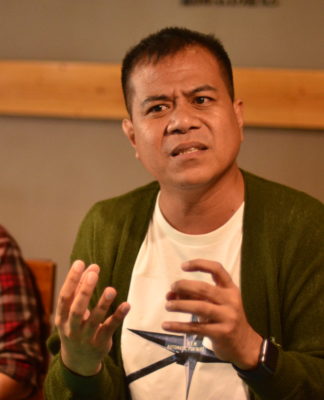IN THE middle of a national turmoil, the remains of Jaime Cardinal Sin were laid to rest.
Manila Archbishop Gaudencio Rosales, who led the interment rites at the crypt of the Manila Cathedral last June 28, acknowledged the courage of the “priestly shepherd” and his “innovative, radical servant-leadership”.
“He was the ultimate outspoken prophet who was completely unafraid of despots and of the unjust, dishonest, and oppressive,” Rosales said of Sin. “He had always dreamed of the people to be free from tyranny.”
The late cardinal had always pursued the search for truth, Rosales added.
Sin was called a “political priest” when he took up the duty to “put Christ into politics” in his 30 years of service as Manila Archbishop. He helped lead two People Power Revolutions that ousted Presidents Ferdinand Marcos and Joseph Estrada in 1986 and 2001.
Before the concelebrated funeral mass former auxilliary bishops in Manila placed his coffin on a horse-driven carriage adorned with white roses and escorted it outside for the conferment of state honors by President Macapagal-Arroyo.
Mourners released hundreds of white balloons and offered rounds of applause to the patriotic prelate as members of the Armed Forces of the Philippines escorted the mahogany casket draped with the Philippine flag in a parade around the Plaza Romano. A 21-gun salute was also rendered.
Balanga Bishop Socrates Villegas, Sin’s former spokesperson and assistant, could not hide the grief over the loss of his mentor.
Villegas said Sin would always utter the word “vamos” (let us go) whenever they embarked on a journey. But when Sin died, he went off alone.
“The invitation was there but I could not believe he left alone and left me behind,” a teary-eyed Villegas said during the homily of the funeral Mass.
The Thomasian community felt a great loss over the death of Sin especially now that the President Macapagal-Arroyo is in a political turmoil.
“l know that life must move on, but I cannot help but to think about the possibility that the country might not take the advice of Sin’s successor,” said theology teacher Mark Aquino.
The invitation to the interment rites was exclusive to Sin’s relatives and friends, high-ranking politicians, and selected members of the Church outside the Cathedral.
20,000 people, viewed the ceremony through LCD monitors.
Students from various Catholic schools, including UST, gathered at the Quirino Grandstand and marched toward the Manila Cathedral while singing Church hymns and praying the rosary.
Residents of Cardinal Sin Village, a housing project in Santa Ana, Manila which Sin sponsored for the poor, released 76 doves when Sin’s remains were about to be brought to the crypt.
A time capsule made of stainless steel was also placed in the tomb. It contained the “rogito” or biography of Sin, a rosary, six Miraculous Medals of the Virgin Mary, newspapers and coins to mark the year of his death, and the blueprint of the Cardinal Sin Village.
Sin died from complications of diabetes and kidney failure at the age of 76 last June 21.
















